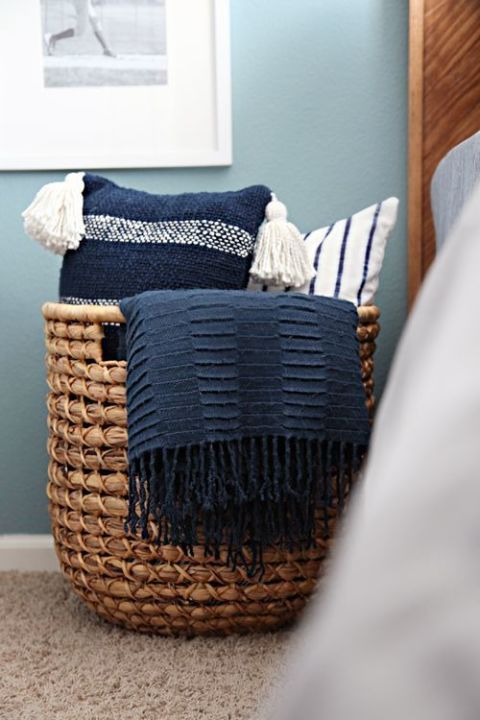Illustration 01: A basket storage for throws and extra pillows
1. Put all your items in the place they belong
Before i started my design journey, i had a habit of putting things just anywhere where they were convinient to access or to store. For example, i had an old reading chair that i did not use so i put it in the balcony, I had my plastic teeth floss in my T.V unit as i would easily reach them from my couch and I also had my shoe rack near the bathroom which opens out to the lounge. The first step for me was to put all items where they belonged. The best thing about beggining here is when you begin to declutter by category, most things will already be in one place. You are able to know what you have in excess,what you have less and what you have just enough of.
2. Choose quality not quantity
Once everything is in the place its meant to be, now you can start discarding what you dont need. An elegant design needs good quality things. When discarding, take out anything that might be completely broken, anything that does not have its pair and anything that is completely outdated and irrelevant. For example, in this day and age, you do not need a VCR. It might be working and in good condition but not functional in this digital era. Old items such as bedsheets, towels and rugs should be taken out as well. As you declutter, take out all the excess items such as crockery and cutlery. Also discard plastics, melamine and paper crockery.
3. Schedule all your items
Put together a schedule (List) of all items that are left. To help you be able to put together your moodboard later, take photos of all items in single or in bulk and place in the schedule. The schedule should contain the space name, item name, general description, quantity and an action tab that shows if it can be replaced, re-used or repurposed. Some items may be in good condition, are new and are up to date in style but may not fit into the design style and colour that we will adopt later. Those are items that can be traded in or can be sold to be able to buy new ones that fit in the style and are to be clearly marked out on the "Replace" tab. These tabs can be left blank at this stage till after a moodboard has been generated.
Inspiration pour la journee
Tara Dennis is an Australian designer working with Better homes and gardens. She is completely incredible and gives very creative ideas for decorating and designing your house. The video below will inspire your decluttering journey.








